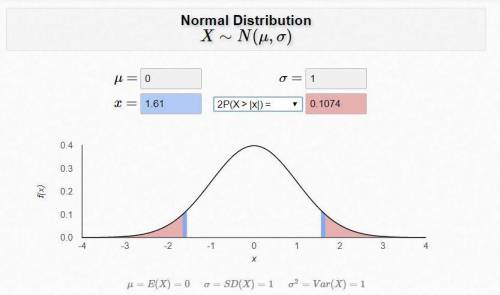
Mathematics, 09.11.2019 02:31 jenny8460
In recent years more people have been working past the age of 65. in 2005, 27% of people aged 65–69 worked. a recent report from the organization for economic co-operation and development (oecd) claimed that percentage working had increased (usa today, november 16, 2012). the findings reported by the oecd were consistent with taking a sample of 600 people aged 65–69 and finding that 180 of them were working. a. develop a point estimate of the proportion of people aged 65–69 who are working. b. set up a hypothesis test so that the rejection of h0 will allow you to conclude that theproportion of people aged 65–69 working has increased from 2005.c. conduct your hypothesis test using α 5 .05. what is your conclusion?

Answers: 3
Another question on Mathematics

Mathematics, 21.06.2019 16:50
Line l passes through points (0,4) and (3,6) what is the slope of a line that is parallel to line l -2/3 -3/2 2/3 3/2
Answers: 1

Mathematics, 22.06.2019 00:00
The amount of data left on the cell phone six gb for 81.5 gb of data is used how much data is available at the beginning of the cycle
Answers: 2


You know the right answer?
In recent years more people have been working past the age of 65. in 2005, 27% of people aged 65–69...
Questions




History, 01.05.2021 23:00


Physics, 01.05.2021 23:00



Social Studies, 01.05.2021 23:00






Biology, 01.05.2021 23:00




Mathematics, 01.05.2021 23:00

Social Studies, 01.05.2021 23:00








